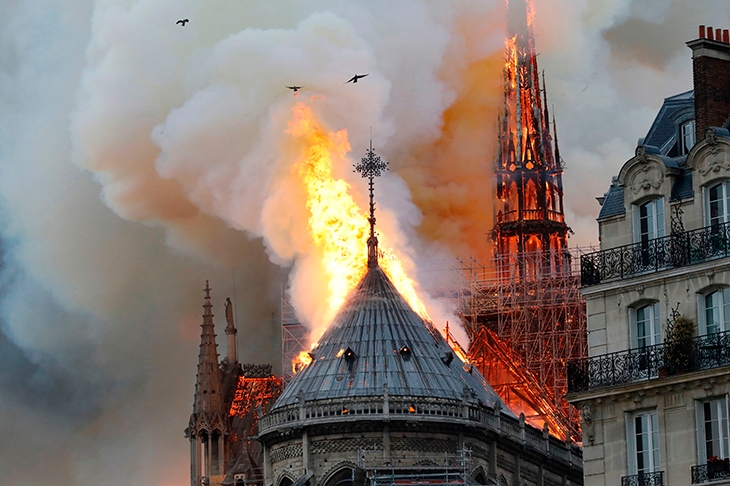‘Great edifices, like great mountains, are the work of centuries,’ wrote Victor Hugo in Notre-Dame de Paris. ‘The man, the artist, the individual, is effaced in these great masses, which lack the name of their author. Human intelligence is there summed up and totalised.’ The foundation stone of the cathedral of Our Lady of Paris was laid 850 years ago, but it was the work of generations, and took 200 years to complete. It soon became one of the greatest churches in Christendom and, as such, was ripe for desecration by the Jacobin fanatics of the French Revolution. In 1793, its altar was torn out in a ceremony that was too grotesque even for Robespierre. Napoleon reinstated Notre Dame as a cathedral in order to have himself crowned there, but the building soon fell into a state of hideous disrepair — which Hugo’s 1831 novel brought to the world’s attention.
Hugo’s musings on the soul of Notre Dame seem painfully relevant after this week’s calamity. He writes of ‘the successive engrafting of many arts at many levels’ that happens naturally over time when great cathedrals are built: ‘The service of religion once assured and provided for, architecture does what she pleases. Statues, stained glass, rose windows, arabesques, denticulations, capitals, bas-reliefs — she combines all these imaginings according to the arrangement which best suits her.’ Much of what Hugo describes is now lost or gravely damaged. Even the spire has gone, though not for the first time: the original had to be removed after it was damaged by wind. What collapsed on Monday was a 19th-century reconstruction, but that will hardly console the people of France. The agnostic President Emmanuel Macron spoke for his nation when he said that he had watched ‘part of us’ burn.
For French Catholics, the wider Catholic church and Christians in general, the wound goes deep.








Comments
Join the debate for just £1 a month
Be part of the conversation with other Spectator readers by getting your first three months for £3.
UNLOCK ACCESS Just £1 a monthAlready a subscriber? Log in